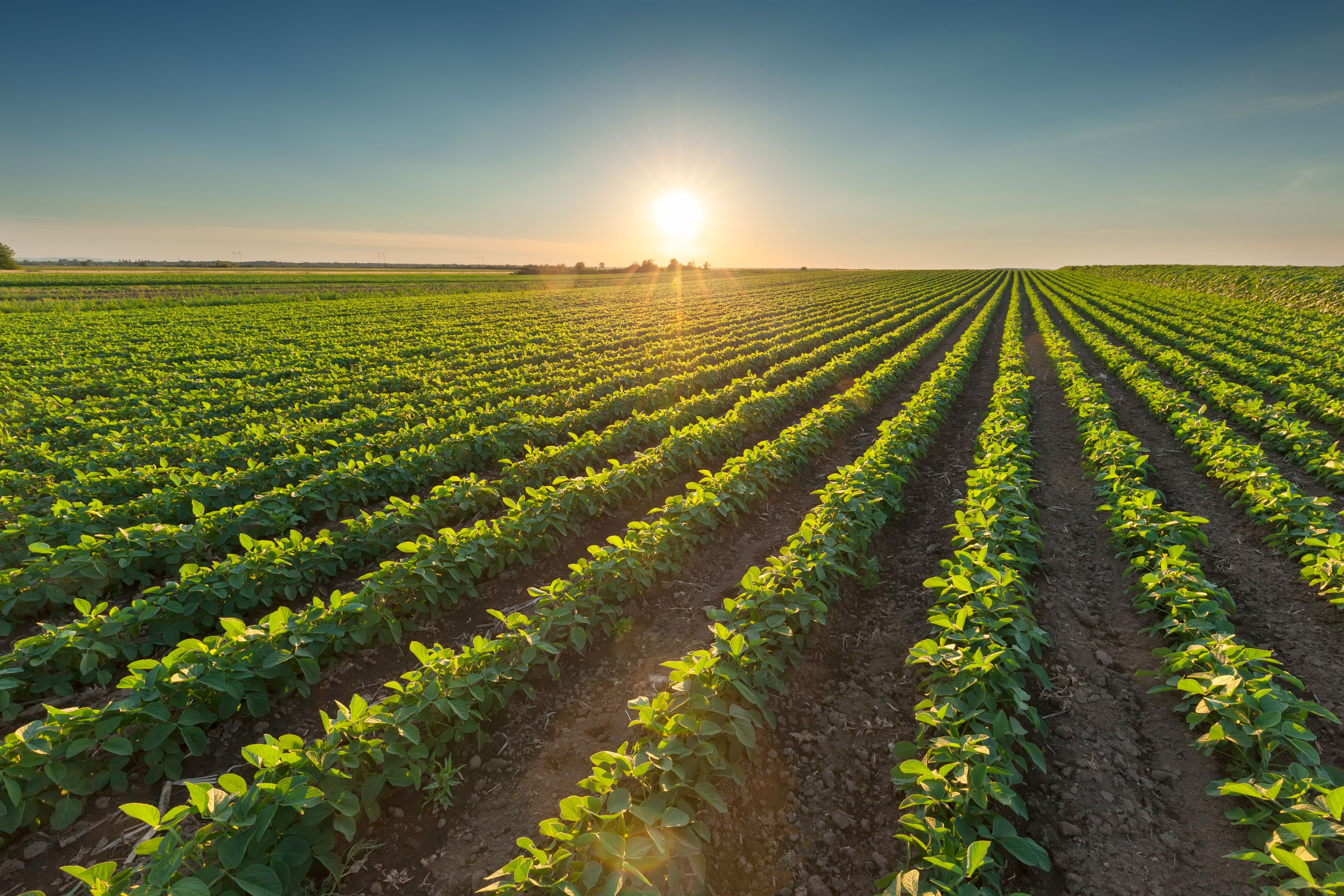Transfer Learning-Assisted LIBS Enhances Crop Traceability in Sample-Limited Conditions
Researchers have developed a transfer learning-assisted laser-induced breakdown spectroscopy (LIBS) method to identify geographical origins of crops with an impressive accuracy by incorporating deep adaptation networks.
In a recent study published in Spectrochimica Acta Part B: Atomic Spectroscopy, researchers have harnessed the power of transfer learning and deep learning-assisted laser-induced breakdown spectroscopy (LIBS) to revolutionize the identification of geographical origins in crops (1). Using LIBS in conjunction with the domain adaptive neural network (DaNN) and deep adaptation networks (DAN) was shown in this study to improve food traceability and safeguard consumer interests, even in scenarios with limited training samples (1).
Healthy soybean crops at beautiful sunset | Image Credit: © rasica - stock.adobe.com

LIBS is a promising application for identifying crop origins. However, the applicability of this technique is not perfect. In particular, researchers encounter challenges when using LIBS for crop identification because of the scarcity of training supplies and poor transferability between crops (1). The research team sought to overcome these limitations by developing a novel transfer learning-assisted LIBS method, resulting in an impressive maximum accuracy of 93.81% across six distinct transfer combinations (1).
The core of their approach involved the design of a lightweight one-dimensional convolutional neural network (L1D-CNN) that leveraged the LIBS spectral features (1). The researchers were effective in reducing the dimensionality of the preprocessed spectral data by using principal component analysis (PCA) (1). As a result, they obtained 500 input features (1). Although this method was meant for rice, it was effective for other crops as well. For example, the researchers found that the method was able to identify millet and oat origins as well (1).
Comparing the performance to a non-transfer learning-based LIBS approach, the transfer learning-assisted method demonstrated remarkable recognition accuracy, even when faced with limited sample sizes (1). This breakthrough offers significant advantages in real-world scenarios where extensive training data sets can be challenging to get.
The researchers also employed the t-distribution stochastic neighbor embedding (t-SNE) technique to obtain valuable insights into how the LIBS information could be transferred effectively across different crops, contributing to the overall success of the approach.
Improved accuracy for crop classification also benefitted from the researchers using DaNN and DAN networks. Integrating these techniques into the workflow resulted in enhanced performance across five distinct cases, showcasing the potential of these adaptation techniques in bolstering crop traceability efforts (1).
Furthermore, feature visualization techniques proved that the knowledge acquired from one crop could be transferred to another (1). This finding opens up exciting possibilities for the widespread implementation of transfer learning-assisted LIBS in the agriculture and food industry (1).
As a result of this study, the researchers demonstrated the immense potential of transfer learning-assisted LIBS in enhancing crop traceability, even when faced with limited sample sizes. By combining the power of deep learning and adaptation networks, the research team established and successfully implemented a new way to ensure the authenticity and safety of agricultural products. This study, therefore, has far-reaching implications for the future of tracing food origins, which could greatly benefit consumers.
Reference
(1) Lin, P.; Wen, X.; Ma, S. Rapid identification of the geographical origins of crops using laser-induced breakdown spectroscopy combined with transfer learning. Spectrochimica Acta Part B: At. Spectrosc. 2023, 206, 106729. DOI: 10.1016/j.sab.2023.106729
Laser Ablation Molecular Isotopic Spectrometry: A New Dimension of LIBS
July 5th 2012Part of a new podcast series presented in collaboration with the Federation of Analytical Chemistry and Spectroscopy Societies (FACSS), in connection with SciX 2012 — the Great Scientific Exchange, the North American conference (39th Annual) of FACSS.